 W
WThe Territory of New Mexico was an organized incorporated territory of the United States that existed from September 9, 1850, until January 6, 1912, when the remaining extent of the territory was admitted to the Union as the State of New Mexico, making it the longest-lived organized incorporated territory of the United States, lasting approximately 62 years.
 W
WThe Apache Campaign of 1896 was the final United States Army operation against Apaches who were raiding and not living in a reservation. It began in April after some Apaches killed three American settlers in Arizona. The Apaches were pursued by the army, which caught up with them in the Four Corners region of Arizona, New Mexico, Sonora and Chihuahua. There were only two important encounters during the campaign and, because both of them occurred in the remote Four Corners region, it is unknown if they took place on American or Mexican soil.
 W
WThe Apache Wars were a series of armed conflicts between the United States Army and various Apache nations fought in the southwest between 1849 and 1886, though minor hostilities continued until as late as 1924. The United States inherited conflicts between American settlers and Apache groups when Mexico ceded territory after the Mexican–American War in 1846. These conflicts were continued as new United States citizens came into traditional Apache lands to raise livestock, crops and to mine minerals.
 W
WThe Territory of Arizona was a territory of the United States that existed from February 24, 1863 until February 14, 1912, when the remaining extent of the territory was admitted to the Union as the state of Arizona. It was created from the western half of the New Mexico Territory during the American Civil War.
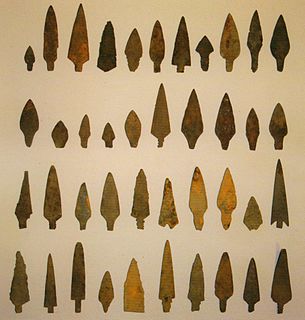 W
WThe Battle of Cieneguilla was an engagement of the Jicarilla War involving a group of Jicarilla Apaches, possibly their Ute allies, and the American 1st Cavalry Regiment on March 30, 1854 near what is now Pilar, New Mexico. The Santa Fe Weekly Gazette reported that the action "was one of the severest battles that ever took place between American troops and Red Indians." It was one of the first significant battles between American and Apache forces and was also part of the Ute Wars, in which Ute warriors attempted to resist Westward expansion in the Four Corners region.
 W
WThe Battle of Fort Tularosa occurred in May 1880 near the present-day town of Aragon in Catron County, New Mexico. In an ongoing campaign to keep from being forced to live on reservations, Chiricahua Apache warriors led by Victorio attacked Fort Tularosa north of San Francisco Plaza. Buffalo Soldiers from the United States Army's 9th Cavalry, led by Sergeant George Jordan, repulsed the attack.
 W
WThe Battle of Hembrillo Basin was fought April 5-8, 1880 between the United States Army against a combined band of Chiricahua and Mescalero Apaches led by Chief Victorio. Hembrillo Basin was the largest battle of Victorio's War, although casualties were light on both sides. Victorio held off an attack by superior numbers of army soldiers and Indian scouts, evacuated his women and children from the battlefield, and withdrew successfully. Hembrillo Basin is located on the White Sands Missile Range and access by the public is strictly regulated.
 W
WThe Battle of Little Dry Creek was a skirmish during Geronimo's War. Chiricahua Apache warriors were raiding in the Arizona and New Mexico border area when they ambushed a larger force of United States Army troops and Navajo Scouts near Pleasanton.
 W
WThe Battle of Pecos River was fought in 1864 during the Navajo Wars. United States Army troops and Apache Scouts defeated a force of Navajo warriors next to the Pecos River in New Mexico. It is notable for being one of the many Indian war battles involving the California Column.
 W
WIn October 1857, an expedition led by Edward Fitzgerald Beale was tasked with establishing a trade route along the 35th parallel from Fort Smith, Arkansas to Los Angeles, California.
 W
WThe Black Hawk War, or Black Hawk's War, is the name of the estimated 150 battles, skirmishes, raids, and military engagements taking place from 1865 to 1872, primarily between Mormon settlers in Sanpete County, Sevier County and other parts of central and southern Utah, and members of 16 Ute, Southern Paiute, Apache and Navajo tribes, led by a local Ute war chief, Antonga Black Hawk. The conflict resulted in the abandonment of some settlements and hindered Mormon expansion in the region.
 W
WThe Bonneville Expedition was a military operation launched by the United States Army in 1857 at the beginning of the Chiricahua Apache Wars. Colonel Benjamin Bonneville, Lieutenant Dixon S. Miles, and Colonel William W. Loring commanded parties which headed west from Fort Fillmore, New Mexico Territory. The expedition quickly engaged Apaches in two small but significant battles, the first in the Black Range and the second along the Gila River near present-day Safford, Arizona.
 W
WThe Compromise of 1850 was a package of five separate bills passed by the United States Congress in September 1850 that defused a political confrontation between slave and free states on the status of territories acquired in the Mexican–American War. It also set Texas's western and northern borders and included provisions addressing fugitive slaves and the slave trade. The compromise was brokered by Whig senator Henry Clay and Democratic senator Stephen Douglas with the support of President Millard Fillmore.
 W
WThe Domínguez–Escalante expedition was a Spanish journey of exploration conducted in 1776 by two Franciscan priests, Atanasio Domínguez and Silvestre Vélez de Escalante, to find an overland route from Santa Fe, New Mexico, to their Roman Catholic mission in Monterey, on the coast of modern day central California. Domínguez, Vélez de Escalante, and Bernardo de Miera y Pacheco, acting as the expedition's cartographer, traveled with ten men from Santa Fe through many unexplored portions of the American West, including present-day western Colorado, Utah, and northern Arizona. Along part of the journey, they were aided by three indigenous guides of the Timpanogos tribe.
 W
WThe First Battle of Mesilla, was fought on July 25, 1861 at Mesilla in New Mexico Territory, in present-day Doña Ana County, New Mexico.
 W
WFort Cummings is a former U. S. Army post located near Cooke's Springs, in Luna County, New Mexico. It is located 20 miles northeast of Deming, New Mexico.
 W
WFort Fillmore, located at 32°13′30″N 106°42′52″W, was a United States military fortification established by Colonel Edwin Vose Sumner in September 1851 near Mesilla in what is now New Mexico, primarily for the purpose of protecting settlers and traders traveling to California. Early frontier migrants were under constant threat from attack by local Native Americans, and a network of forts was eventually created by the U.S. government to protect and encourage westward expansion. Fort Fillmore was intended to protect a corridor plagued by hostile Apaches, where several migration routes converged between El Paso and Tucson to take advantage of Apache Pass.
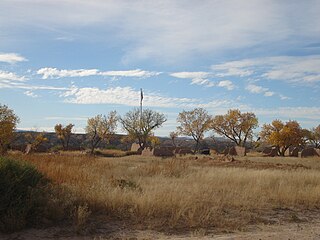 W
WFort Selden was a United States Army post, occupying the area in what is now Radium Springs, New Mexico. The site was long a campground along the El Camino Real de Tierra Adentro. It was the site of a Confederate Army camp in 1861. The U. S. Army established Fort Selden in 1865 for the purpose of protecting westward settlers from Native American raids, the post fell into disrepair after the American Civil War. It was ultimately abandoned in 1891, due in large part to the decision to expand Fort Bliss and the lack of any expenditures for repair of the facility.
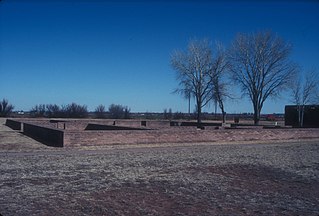 W
WFort Sumner was a military fort in New Mexico Territory charged with the internment of Navajo and Mescalero Apache populations from 1863 to 1868 at nearby Bosque Redondo.
 W
WFort Union National Monument is a unit of the National Park Service of the United States, and is located north of Watrous in Mora County, New Mexico. The national monument was founded on June 28, 1954.
 W
WThe Gadsden Purchase, is a 29,670-square-mile (76,800 km2) region of present-day southern Arizona and southwestern New Mexico that the United States acquired from Mexico by the Treaty of Mesilla, which took effect on June 8, 1854. The purchase included lands south of the Gila River and west of the Rio Grande where the U.S. wanted to build a transcontinental railroad along a deep southern route, which the Southern Pacific Railroad later completed in 1881–1883. The purchase also aimed to resolve other border issues.
 W
WGila City is a ghost town in Yuma County in the U.S. state of Arizona. The town was settled in 1858 in what was then the New Mexico Territory.
 W
WThe following is a list of the Governors of the State of New Mexico and Territory of New Mexico.
 W
WThe Territory of Jefferson was an extralegal and unrecognized United States territory that existed from October 24, 1859 until the creation of the Colorado Territory on February 28, 1861. The Jefferson Territory included land officially part of the Kansas Territory, the Nebraska Territory, the New Mexico Territory, the Utah Territory, and the Washington Territory, but the area was remote from the governments of those five territories. The government of the Jefferson Territory, while democratically elected, was never legally recognized by the United States government, although it managed the territory with relatively free rein for 16 months. Many of the laws enacted by the Jefferson Territorial Legislature were reenacted and given official sanction by the new Colorado General Assembly in 1861.
 W
WThe Jicarilla War began in 1849 and was fought between the Jicarilla Apaches and the United States Army in the New Mexico Territory. Ute warriors also played a significant role in the conflict as they were allied with the Jicarillas. The war started when the Apaches and Utes began raiding against settlers on the Santa Fe Trail. Eventually, in 1853, the American army retaliated which resulted in a series of battles and campaigns that ended in 1854 when a large military expedition managed to quell most of the violence. However, some minor skirmishing continued into 1855.
 W
WJohntown is a ghost town in Lyon County, Nevada United States. It was originally an important mining camp in Gold Canyon, midway between Dayton and Silver City. In the late 1850s, Johntown was the largest mining camp in the western Utah Territory.
 W
WAmédée Joullin was a French American painter whose work centered on the landscapes of California and on Native Americans.
 W
WLas Gorras Blancas was a group active in the New Mexico Territory and American Southwest in the late 1880s and early 1890s, in response to Anglo-American squatters. Founded in April 1889 by brothers Juan Jose, Pablo, and Nicanor Herrera, with support from vecinos in the New Mexico Territory pueblo communities of El Burro, El Salitre, Ojitos Frios, and San Geronimo, in present day San Miguel County.
 W
WThe Lincoln County War was an Old West conflict between rival factions which began in 1878 in New Mexico Territory, the predecessor of the state of New Mexico, and continued until 1881. The feud became famous because of the participation of the criminal Henry McCarty. Other notable participants included Sheriff William J. Brady, cattle rancher John Chisum, lawyer and businessman Alexander McSween, James Dolan and Lawrence Murphy.
 W
WThe Battle of the Mimbres River was a surprise attack launched by a troop of American militia against an encampment of Chiricahua Apaches along the western shore of the Mimbres River.
 W
WThe Territory of Nevada (N.T.) was an organized incorporated territory of the United States that existed from March 2, 1861, until October 31, 1864, when it was admitted to the Union as the State of Nevada.
 W
WThe New Mexico Campaign was a military operation of the Trans-Mississippi Theater of the American Civil War from February to April 1862 in which Confederate Brigadier General Henry Hopkins Sibley invaded the northern New Mexico Territory in an attempt to gain control of the Southwest, including the gold fields of Colorado and the ports of California. Historians regard this campaign as the most ambitious Confederate attempt to establish control of the American West and to open an additional theater in the war. It was an important campaign in the war's Trans-Mississippi Theater, and one of the major events in the history of the New Mexico Territory in the American Civil War.
 W
WRailroad Wars were business rivalries between railroad companies, which occurred frequently in American history. Although they were usually little more than legal disputes inside a courtroom, they sometimes turned into armed conflicts. There has been competition between railroad companies since the beginning of railroading in the United States, but violent confrontations were most common in the final quarter of the 19th century, particularly in the Old West.
 W
WThe St. James Hotel, located in historic downtown Cimarron, New Mexico, is a historic hotel, restaurant and bar. It is known for its legendary status of being haunted by the spirits of men murdered there in the 19th century during northeastern New Mexico's "wild west" days. Today, guests can stay at the historic hotel, in either the historic section or in a modern addition. The hotel is in the National Register of Historic Places and is part of the Cimarron Historic District.
 W
WThe Santa Fe Trail was a 19th-century route through central North America that connected Franklin, Missouri with Santa Fe, New Mexico. Pioneered in 1821 by William Becknell, who departed from the Boonslick region along the Missouri River, the trail served as a vital commercial highway until 1880, when the railroad arrived in Santa Fe. Santa Fe was near the end of the El Camino Real de Tierra Adentro, which carried trade from Mexico City.
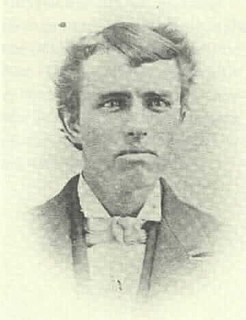 W
WAb Saunders was an American cowboy, and at times gunman, best known for his association with Billy the Kid, Charlie Bowdre, Frank McNab, Doc Scurlock, and Saunders's cousins Frank and George Coe, when he was a member of the Lincoln County Regulators, a deputized posse, during the 1878 Lincoln County War in the New Mexico Territory
 W
WThe Sitgreaves Expedition Down the Zuni and Colorado Rivers in 1851 was a combined American scientific and military mission to explore the Zuni River, the Little Colorado River and the Colorado River in 1851. Setting out from northern New Mexico, the expedition traveled west across Arizona and then south along the Colorado to Fort Yuma in California. Mohave native Americans attacked the explorers during their trek across the desert and in a short battle the natives were repulsed.
 W
WThe Skeleton Canyon shootout was a gunfight on August 12, 1896, between members of the High Five Gang and a posse of American lawmen. Following a failed robbery on August 1 of the bank in Nogales, Arizona, the High Fives headed east and split up. The gang's leader, Black Jack Christian, and George Musgrave got away.
 W
W'Soldiers Farewell Stage Station was a stagecoach stop of the 1858-1861 Butterfield Overland Mail route before the company moved to the central route. West of "Soldiers Farewell Hill" on the west bank of a drainage arroyo, the stop was on the Butterfield Overland Mail route (1858-1861) in Grant County, New Mexico. According to the Overland Mail Company Through Time Schedule, it was 150 miles west of El Paso, Texas and 184½ miles east of Tucson, Arizona. Located 42 miles east of Stein's Peak Station and 14 miles southwest of Ojo de Vaca Station.
 W
WSouthern Emigrant Trail, also known as the Gila Trail, the Kearny Trail, Southern Trail and the Butterfield Stage Trail, was a major land route for immigration into California from the eastern United States that followed the Santa Fe Trail to New Mexico during the California Gold Rush. Unlike the more northern routes, pioneer wagons could travel year round, mountain passes not being blocked by snows, however it had the disadvantage of summer heat and lack of water in the desert regions through which it passed in New Mexico Territory and the Colorado Desert of California. Subsequently, it was a route of travel and commerce between the eastern United States and California. Many herds of cattle and sheep were driven along this route and it was followed by the San Antonio-San Diego Mail Line in 1857-1858 and then the Butterfield Overland Mail from 1858 - 1861.
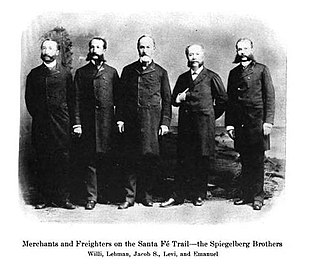 W
WThe Spiegelberg Brothers or the House of Spiegelberg Brothers, Santa Fe Traders was founded by Soloman Jacob Spiegelberg and Levi Spiegelberg in 1848. It was a thriving wholesale merchant partnership which included a grocery and dry goods store across from the Governor's Palace It was the first Jewish mercantile company in Santa Fe. The Spiegelberg brothers expanded to include four other brothers. They served as sutlers to the American military and as Indian traders. They later established and were major stockholders in the Second National Bank of Santa Fe. The reach of their numerous investments and the bank have been described as a regional business empire, spreading across large parts of the Southwest. Investments included mining operations, insurance, and real estate ventures.
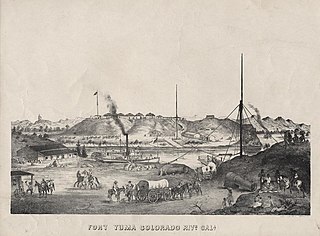 W
WSteamboats on the Colorado River operated from the river mouth at the Colorado River Delta on the Gulf of California in Mexico, up to the Virgin River on the Lower Colorado River Valley in the Southwestern United States from 1852 until 1909, when the construction of the Laguna Dam was completed. The shallow draft paddle steamers were found to be the most economical way to ship goods between the Pacific Ocean ports and settlements and mines along the lower river, putting in at landings in Sonora state, Baja California Territory, California state, Arizona Territory, New Mexico Territory, and Nevada state. They remained the primary means of transportation of freight until the advent of the more economical railroads began cutting away at their business from 1878 when the first line entered Arizona Territory.
 W
WTenabo is a ghost town in Lander County, Nevada United States.
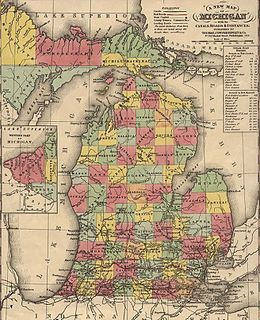 W
WIn the United States, a timber pirate is a pirate engaged in the illegal logging industry.
 W
WThe Trans-Mississippi Theater of the American Civil War consists of the major military operations west of the Mississippi River. The area is often thought of as excluding the states and territories bordering the Pacific Ocean, which formed the Pacific Coast Theater of the American Civil War (1861–1865).
 W
WVictorio's War, or the Victorio Campaign, was an armed conflict between the Apache followers of Chief Victorio, the United States, and Mexico beginning in September 1879. Faced with arrest and forcible relocation from his homeland in New Mexico to San Carlos Indian Reservation in southeastern Arizona, Victorio led a guerrilla war across southern New Mexico, west Texas and northern Mexico. Victorio fought many battles and skirmishes with the United States Army and raided several settlements until the Mexican Army killed him and most of his warriors in October 1880 in the Battle of Tres Castillos. After Victorio's death, his lieutenant Nana led a raid in 1881.
 W
WThe White massacre was an engagement between American settlers and a band of Utes and Jicarilla Apaches that occurred in northeastern New Mexico on October 28, 1849. It became notable for the Indians' kidnapping of Mrs. Ann White, who was subsequently killed during an Army rescue attempt a few weeks later.